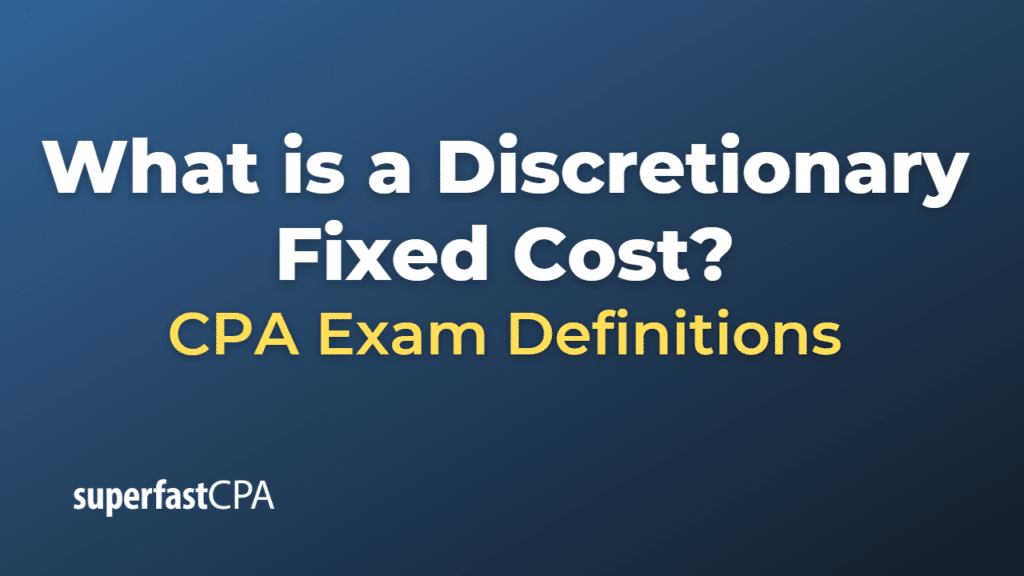Discretionary Fixed Cost
A discretionary fixed cost, also known as a managed fixed cost, refers to costs that are relatively fixed but can be altered in the short-term by current management decisions. Unlike committed fixed costs, such as rent or depreciation on buildings and equipment, which are harder to change, discretionary fixed costs are not tied to the level of output and can be adjusted more easily.
Discretionary fixed costs often include items such as:
- Advertising and marketing expenses: The budget for promotional campaigns can be increased or decreased based on management decisions.
- Training: Costs related to staff development and training programs can be adjusted.
- Research and Development (R&D): These costs are often subject to management discretion and can be changed based on available resources.
- Employee benefits: Extras like recreational activities, company events, or other non-mandatory benefits can be adjusted.
While these costs can be changed in the short term, it’s important to consider the potential long-term implications. For instance, consistently cutting costs on employee training or R&D may negatively impact the company’s future growth or competitiveness. Therefore, management needs to balance the need for immediate cost control with the potential long-term effects on the company’s operations and strategic objectives.
Example of a Discretionary Fixed Cost
Let’s consider a hypothetical company, LuxeAuto Inc., which manufactures and sells luxury electric cars.
The company has several discretionary fixed costs, which include:
- Advertising and marketing: $2,000,000 per year
- Employee training programs: $500,000 per year
- Research and Development (R&D): $3,000,000 per year
- Company events and employee recreational activities: $300,000 per year
Now, suppose LuxeAuto Inc. encounters a slowdown in sales due to a recession. To maintain profitability, the company’s management decides to make the following changes to their discretionary fixed costs:
- Advertising and marketing: They decide to cut back on some marketing campaigns, reducing this cost by 25%, which saves $500,000.
- Employee training programs: They decide to postpone some non-essential training programs, saving $200,000.
- Research and Development (R&D): Despite the slowdown, they decide to keep the R&D investment as is, considering the importance of innovation for their long-term market position.
- Company events and employee recreational activities: They decide to cancel several company events, saving $100,000.
Through these adjustments, LuxeAuto Inc. manages to save $800,000 ($500,000 + $200,000 + $100,000) in discretionary fixed costs. These changes didn’t affect the company’s production capabilities or the quality of the cars they produce, but they may have long-term implications, such as potential impacts on employee morale or market visibility. Thus, the company will need to reassess these cuts once the economic situation improves.













